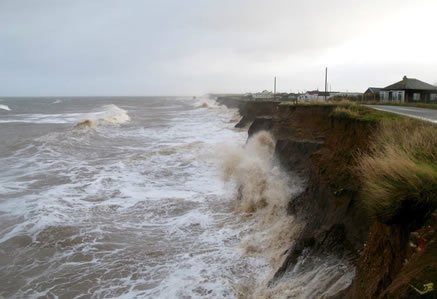Weak swash, strong backwash.
Find out more about destructive waves.
Constructive waves
Find out more about constructive waves.
Constructive and destructive waves.
Find out more about constructive waves and destructive waves.
Destructive waves
Find out more about destructive waves.
Constructive wave
Find out more about constructive waves.
Corrasion is when destructive waves pick up beach material (e.g. pebbles) and hurl them at the base of a cliff. Over time this can loosen cliff material forming a wave-cut notch.
Find out more about coastal erosion.
Corrasion, abrasion, hydraulic action, attrition and corrosion/solution.
Find out more about the processes of coastal erosion.
Coastal erosion is the wearing away of the land by the sea.
Find out more about the processes of coastal erosion.
Abrasion occurs as breaking waves, concentrated between the high and low watermarks, which contain sand and larger fragments wear away the base of a cliff or headland. It is commonly known as the sandpaper effect. This process is particularly common in high-energy storm conditions.
Find out more about coastal erosion.
Waves hitting the base of a cliff causes leads to air compression in cracks, joints and folds in bedding planes, causing repeated changes in air pressure. As air rushes out of the crack when the wave retreats, it leads to an explosive effect as pressure is released. This process is supported further by the weakening effect of weathering. The material breaks off cliffs, sometimes in huge chunks. This process is known as hydraulic action.
Find out more about coastal erosion.
Salt weathering is when salt spray from the sea gets into a crack in a rock. It may evaporate and crystallise, putting pressure on the surrounding rock and weakening the structure.
Find out more about weathering.
When rainwater hits rock it decomposes it or eats it away. This is known as carbonation. This occurs when slightly acidic (carbonic) rain or seawater comes into contact with sedimentary rock, such as limestone or chalk, it causes it to dissolve. A chemical reaction occurs between the acidic water and the calcium carbonate and forms calcium bicarbonate. This is soluble and is carried away in solution. Carbonation weathering occurs in warm, wet conditions.
Find out more about weathering.
Chemical weathering is the breakdown of rock through changing its chemical composition.
Find out more about weathering.
Weathering is the breakdown of rock in situ by the action of rainwater, extremes of temperature, and biological activity.
Find out more about weathering.
Freeze-thaw weathering occurs when rocks are porous (contain holes) or permeable (allow water to pass through). Water enters the rock and freezes. The ice expands by around 9%. This causes pressure on the rock until it cracks. Repeated freeze-thaw can cause the rock to break up.
Find out more about weathering.
Beach material is bounced along the seafloor.
Find out more about coastal transportation.
Littoral drift
Find out more about longshore drift.
Coastal transportation involves material being transported by the sea being deposited or dropped.
Find out more about coastal deposition.
Any three from:
- Waves enter an area of shallow water/waves enter a sheltered area, eg a cove or bay
- There is little wind
- A river or estuary flows into the sea reducing wave energy
- There is a good supply of material and the amount of material being transported is greater than the wave energy can transport.
Find out more about coastal deposition.
Longshore drift happens when waves approach the beach at an angle. The swash (waves moving up the beach) carries material up and along the beach. The backwash (waves moving back down the beach) carries material back down the beach at right angles. This is the result of gravity. This process slowly moves material along the beach and provides a link between erosion and deposition. The material is transported through suspension, traction, solution and saltation. Longshore drift provides a link between erosion, transportation and deposition.
Find out more about longshore drift.

